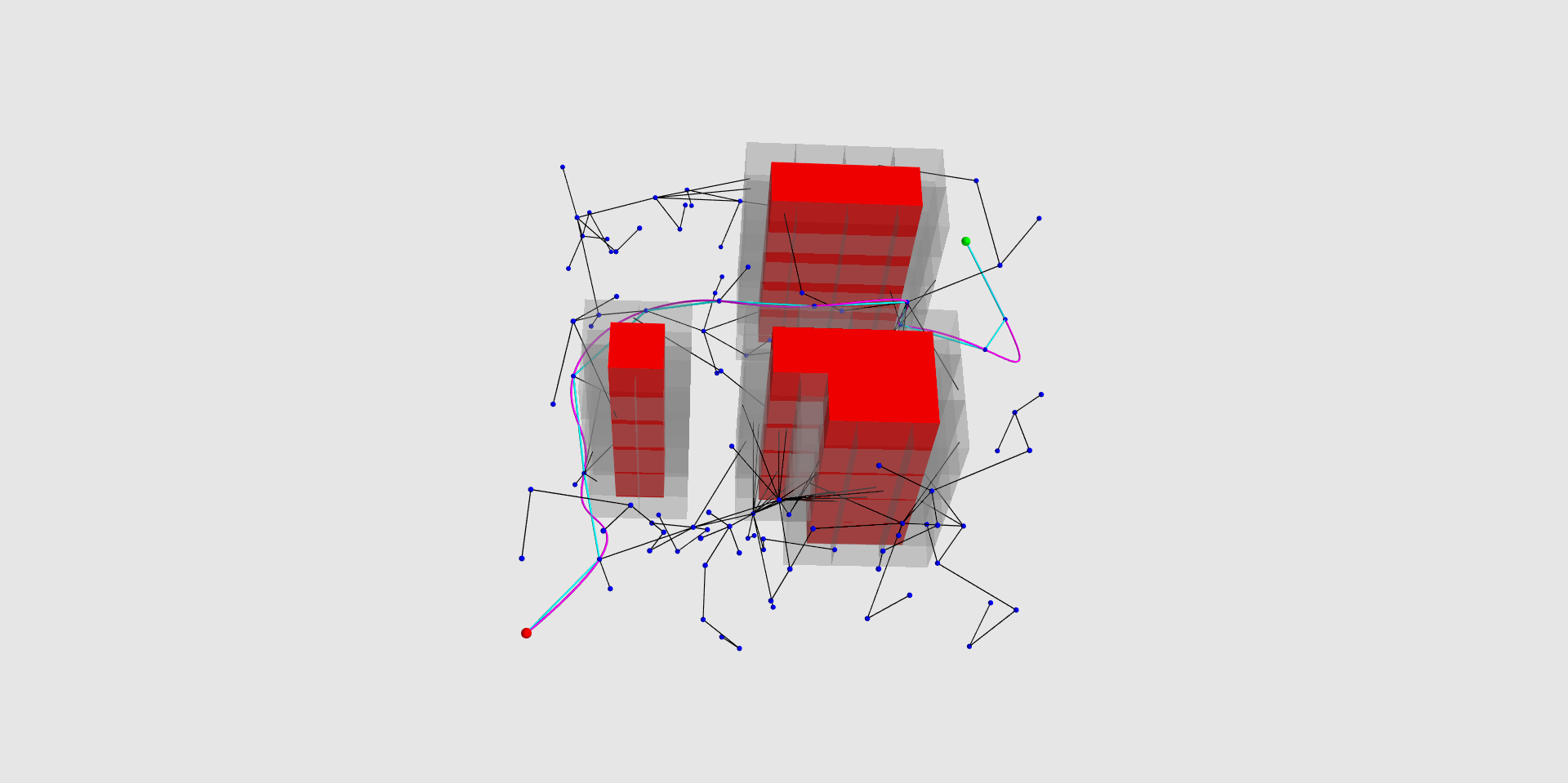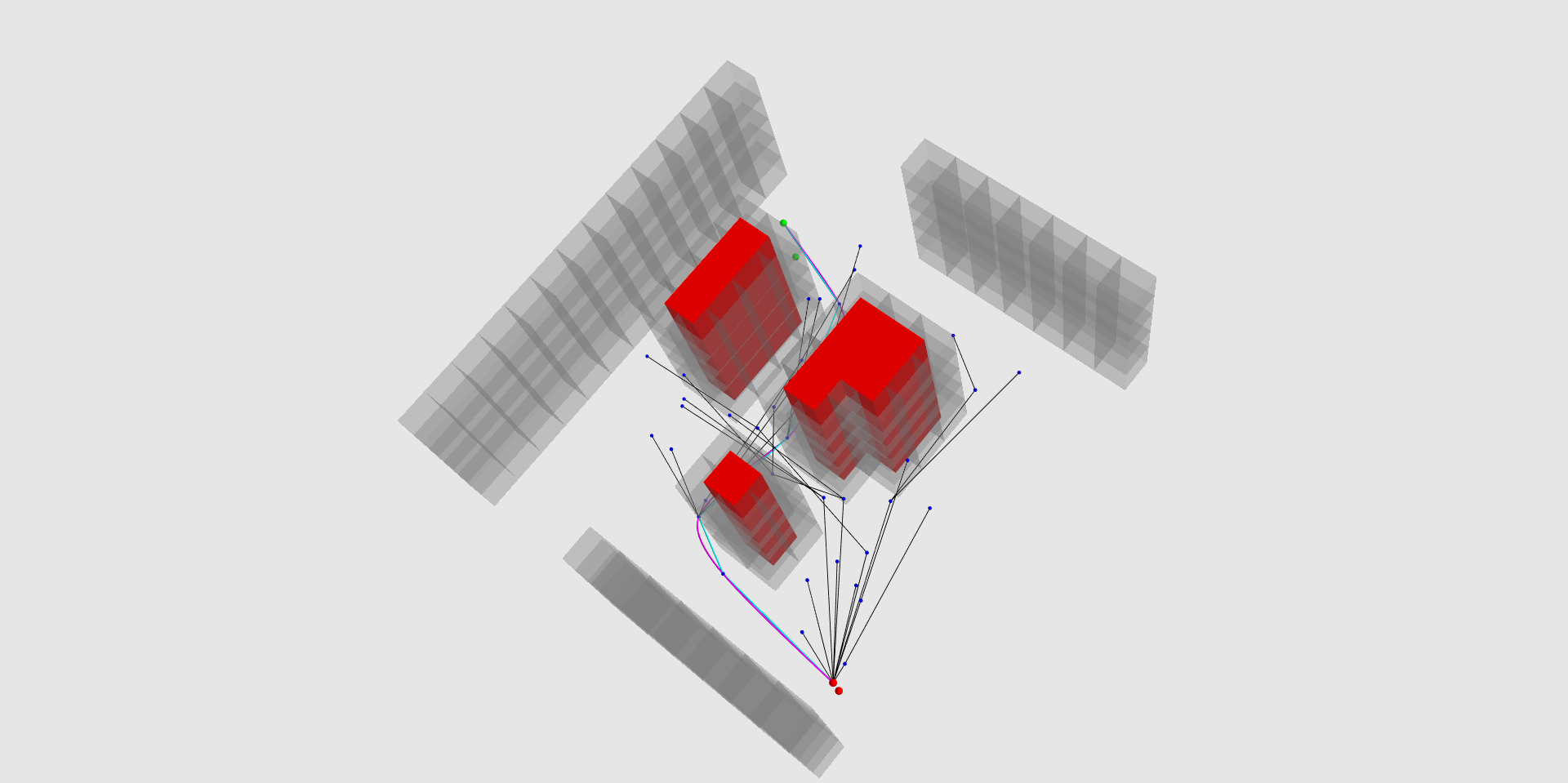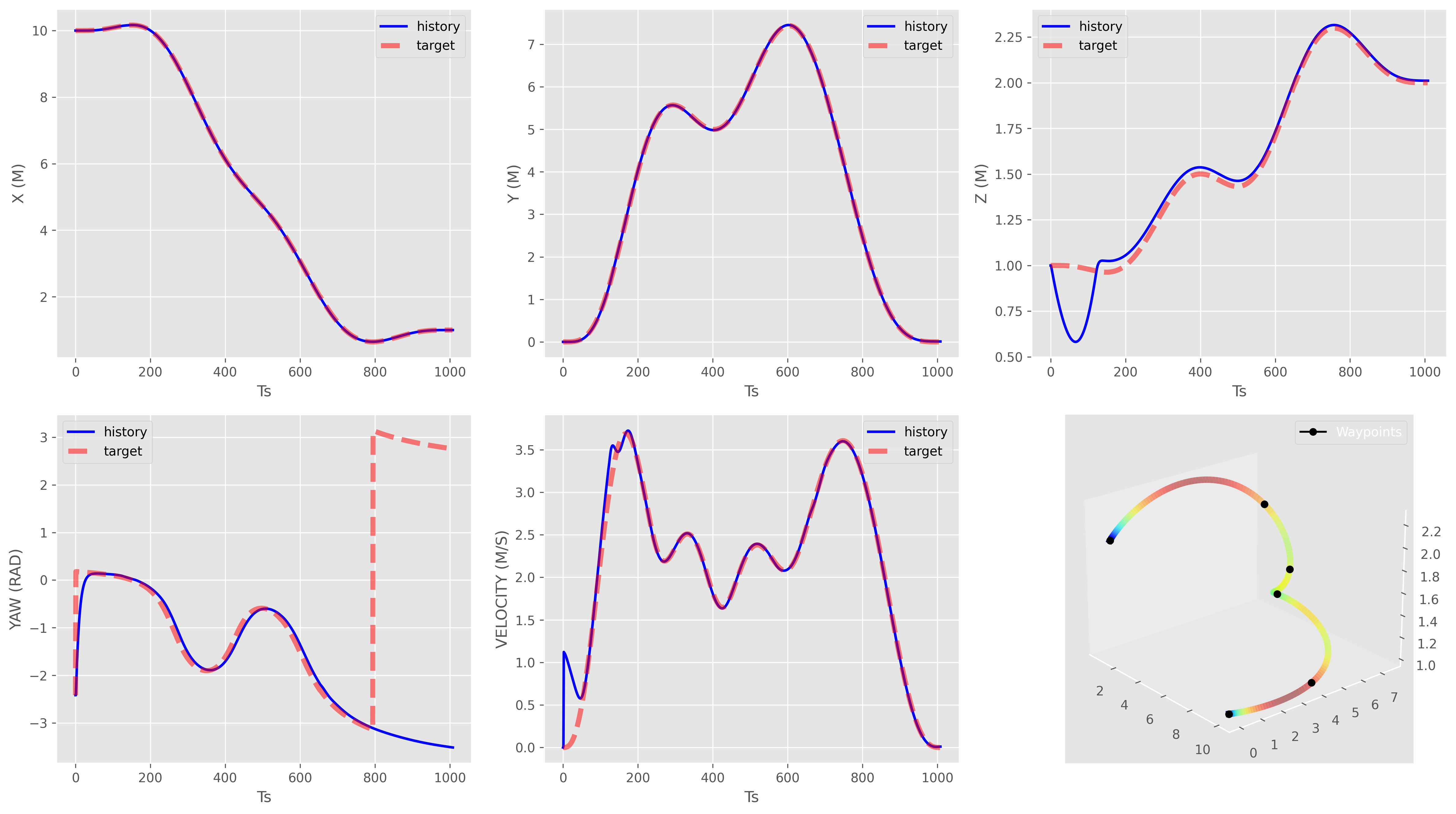- Build a controller to follow a trajectory
- Follow hardcoded waypoints
- From hardcoded waypoints, generate an optimal trajectory (minimum snap)
- From hardcoded waypoints and hardcoded obstacles, generate an optimal trajectory (minimum snap + collision-free)
- Generate waypoints from a path planning algorithm (RRT*), given hardcoded obstacles and generate an optimal trajectory (minimum snap + collision-free)
- Localize the UAV using a Map
- Localize the UAV and build a map (SLAM)
- Handle dynamic obstacles
tracking_perf.mp4
sim3d_with_velocity_v2.mp4
source: A platform for aerial robotics research and demonstration: The Flying Machine Arena
Sergei Lupashin, Markus Hehn, Mark W. Mueller, Angela P. Schoellig, Michael Sherback, Raffaello D’Andrea
Finding a path (waypoints) to a goal location is one of many important steps for an autonomous robot. But this path must satisfy some conditions such that a controller can handle it. Some of these conditions can be summarized as follows:
- The path must be feasible
- The path must be collision-free
- The path must be differentiable
- The path must be smooth enough
The thing is that a system as a quadrotor can be represented (in this case) as a 4th-order system, so a path for this kind of system must be differentiable at least 4 times: Let's denote k as the order of derivative:
- k=1 : velocity
- k=2 : acceleration
- k=3 : jerk
- k=4 : snap
So a good trajectory for this system can be thought of as a minimum snap trajectory, hence a trajectory that minimizes the snap criterion. So we need to find the optimal path
where
We can find the optimal path by solving the Euler-Lagrange equation:
Why 8 coefficients? Because we have 8 boundary conditions to respect. The boundary conditions are:
- Position at t=0, and t=T
- Velocity at t=0, and t=T
- Acceleration at t=0, and t=T
- Jerk at t=0, and t=T
By applying these conditions, we can find the 8 coefficients, hence the optimal path that minimizes the snap criterion.
Differentiating this equation gives the velocity/acceleration/jerk/snap constraints and so on...
what we are interested in is finding the coefficients c0, c1, c2, c3, c4, c5 that satisfy all the constraints (boundary conditions) mentioned above.
_note: If I have another constraint to respect, I will have to find one more coefficient.
Each of the conditions gives an equation, so we can represent them in a Matrix
To respect the position constraint:
$$x(t) = c_{7}t^7 + c_{6}t^6 + c_{5}t^5 + c_{4}t^4 + c_{3}t^3 + c_{2}t^2 + c_{1}t + c_{0}$$
$$x(0) = c_{0}$$
$$x(T) = c_{7}T^7 + c_{6}T^6 + c_{5}T^5 + c_{4}T^4 + c_{3}T^3 + c_{2}T^2 + c_{1}T + c_{0}$$
Matrix form at t=0
Matrix form at t=T
To respect the velocity constraint we differentiate the position equation:
$$\dot{x}(t) = 7c_{7}t^6 +6 c_{6}t^5 + 5c_{5}t^4 + 4c_{4}t^3 + 3c_{3}t^2 + 2c_{2}t + c_{1}$$
$$\dot{x}(0) = c_{1}$$
$$\dot{x}(T) = 7c_{7}T^6 +6 c_{6}T^5 + 5c_{5}T^4 + 4c_{4}T^3 + 3c_{3}T^2 + 2c_{2}T + c_{1}$$
Matrix form at t=0
Matrix form at t=T
To respect the acceleration constraint we differentiate the velocity equation:
$$\ddot{x}(t) = 42c_{7}t^5 + 30c_{6}t^4 + 20c_{5}t^3 + 12c_{4}t^2 + 6c_{3}t + 2c_{2}$$
$$\ddot{x}(0) = 2c_{2}$$
$$\ddot{x}(T) = 42c_{7}T^5 + 30c_{6}T^4 + 20c_{5}T^3 + 12c_{4}T^2 + 6c_{3}T + 2c_{2}$$
Matrix form at t=0
Matrix form at t=T
To respect the jerk constraint we differentiate the acceleration equation:
$$\dddot{x}(t) = 210c_{7}t^4 + 120c_{6}t^3 + 60c_{5}t^2 + 24c_{4}t + 6c_{3}$$
$$\dddot{x}(0) = 6c_{3}$$
$$\dddot{x}(T) = 210c_{7}T^4 + 120c_{6}T^3 + 60c_{5}T^2 + 24c_{4}T + 6c_{3}$$
Matrix form at t=0
Matrix form at t=T
All 8 constraints can be written as an 8x8 matrix to find the coefficients of the polynomial (coefficients of the trajectory). The full matrix is the following:
So
Let's say we want a trajectory that starts from
🚀



